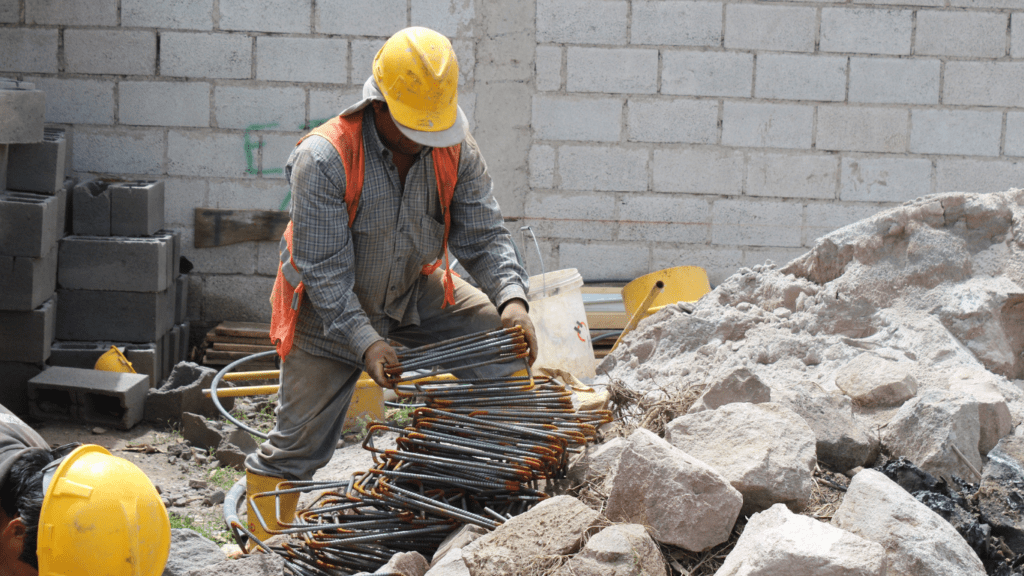Living in an era where sustainability is paramount, I’ve found that rainwater harvesting systems offer a practical and eco-friendly solution for homes. With the ability to collect and store rainwater for various household uses, these systems not only reduce water bills but also help conserve this precious resource.
As someone passionate about environmental conservation, I’ve delved into the benefits of rainwater harvesting and its positive impact on both the planet and homeowners. Implementing a rainwater harvesting system is a step towards self-sufficiency and environmental responsibility.
By capturing rainwater from rooftops and directing it into storage tanks, homeowners can reduce their reliance on traditional water sources while minimizing runoff and erosion. Through my exploration of this sustainable practice, I’ve discovered how simple yet effective it is in promoting a greener lifestyle for individuals and communities alike.
Benefits of Rainwater Harvesting Systems
Implementing rainwater harvesting systems offers numerous benefits for both homeowners and the environment. Let’s explore the advantages of incorporating these sustainable solutions:
- Cost Savings: Rainwater harvesting systems can lead to significant cost savings in the long run. By utilizing rainwater for non-potable uses such as watering plants, cleaning, or flushing toilets, homeowners can reduce their reliance on municipal water sources, thereby lowering their water bills.
- Sustainable Water Supply: Rainwater harvesting promotes a sustainable water supply by harnessing rainwater that would otherwise go to waste. This practice helps replenish groundwater and reduces the demand for treated drinking water, particularly during dry periods or droughts.
- Reduced Flood Risk: By capturing rainwater from roofs and surfaces, rainwater harvesting systems can help reduce the risk of flooding in urban areas. This process effectively manages stormwater runoff, preventing overwhelming of drainage systems and minimizing erosion and pollution in water bodies.
- Environmental Benefits: Rainwater harvesting contributes to environmental conservation by conserving water resources and reducing energy consumption associated with water treatment and distribution. It also helps mitigate the impact of climate change by supporting water resilience and adaptive strategies.
- Independence and Resilience: Implementing a rainwater harvesting system empowers homeowners to become more self-sufficient regarding their water needs. By having a reliable on-site water source, individuals can enhance their resilience to water shortages, supply disruptions, or other water-related challenges.
The adoption of rainwater harvesting systems presents a sustainable and practical solution for homes, offering a range of benefits that encompass economic savings, environmental protection, and water resource management.
Different Types of Rainwater Harvesting Systems
When it comes to rainwater harvesting systems, there are various types available to suit different needs and preferences. Let’s explore two common categories: above-ground systems and below-ground systems.
Above-Ground Systems
Above-ground rainwater harvesting systems are visible structures that are typically easier to install and maintain. These systems often include rain barrels, which are simple containers placed under downspouts to collect rainwater from the roof.
Another example is the rainwater tanks or cisterns, which are larger storage containers that can hold a significant amount of rainwater. These systems are cost-effective and are suitable for both residential and commercial properties.
Below-Ground Systems
In contrast, below-ground rainwater harvesting systems involve storing rainwater underground. This type of system is ideal for those looking to save space or maintain a more aesthetically pleasing outdoor environment.
One common example is the underground storage tanks, which are installed beneath the ground and connected to the downspouts for collecting rainwater. These systems offer a discreet solution for storing rainwater while still providing the benefits of water conservation and reducing runoff.
Installation Process for Home Rainwater Harvesting Systems
Exploring the installation process for home rainwater harvesting systems, it’s essential to understand the steps involved in setting up these sustainable solutions.
- Selecting an Appropriate Location: Choosing the right location for your rainwater harvesting system is crucial. It should ideally be placed close to a downspout or where rainwater runoff is most significant.
- Installing Collection Mechanisms: The next step involves setting up the necessary collection mechanisms, such as gutters and downspouts, to channel rainwater from the roof into the storage tanks or barrels.
- Connecting to Storage Tanks or Barrels: Once the rainwater is collected, it needs to be directed into storage tanks or barrels. Proper connections should be made to ensure a seamless flow of water into the storage containers.
- Implementing Filtration Systems: Integrating filtration systems is vital to remove debris, sediment, and other impurities from the collected rainwater, ensuring its quality for various uses.
- Adding Overflow Controls: To prevent overflow during heavy rainfalls, installing overflow controls is important. This system will redirect excess water once the storage capacity is reached.
- Incorporating Pump Systems (Optional): For homes requiring pressurized water for irrigation or other purposes, incorporating pump systems can aid in delivering rainwater with adequate pressure.
- Regular Maintenance and Monitoring: Lastly, ongoing maintenance and monitoring are essential to keep the system functioning optimally. This includes checking for leaks, cleaning filters, and ensuring all components are in working condition.
By following these steps, homeowners can successfully install and maintain rainwater harvesting systems, promoting sustainability and water conservation in their households.
Maintenance Tips for Rainwater Harvesting Systems
Maintaining rainwater harvesting systems is crucial to ensure their efficiency and longevity. Here are essential maintenance tips to help you keep your system running smoothly:
- Inspect Regularly: Check your system frequently for any signs of damage, leaks, or obstructions. This includes inspecting gutters, downspouts, filters, and storage tanks for debris or clogs that can affect water flow.
- Clean Filters: Clean or replace filters as needed to prevent blockages and maintain water quality. Clogged filters can reduce the system’s efficiency and potentially contaminate the collected rainwater.
- Monitor Water Levels: Keep an eye on the water levels in your storage tanks to ensure an adequate supply. Adjust overflow controls as necessary to manage excess water during heavy rainfall.
- Test Water Quality: Periodically test the quality of the harvested rainwater to ensure it is safe for its intended uses. Consider using water testing kits to check for contaminants and purity.
- Maintain Pump Systems: If your system includes a pump for pressurized water delivery, perform regular maintenance checks to ensure it is functioning correctly. Inspect for any issues and address them promptly.
- Check for Leaks: Inspect all components of the system, including pipes, connectors, and seals, for leaks. Address any leaks immediately to prevent water loss and maintain system efficiency.
- Winter Precautions: In colder climates, take precautions to protect your system from freezing temperatures. Ensure proper insulation for pipes and storage tanks to prevent damage.
- Professional Inspections: Consider scheduling periodic inspections by a professional to assess the overall condition of your rainwater harvesting system. Professionals can identify potential issues early and recommend necessary repairs or upgrades.
By following these maintenance tips, you can ensure that your rainwater harvesting system operates efficiently, providing you with a sustainable water source for your household needs. Regular upkeep is key to maximizing the benefits of rainwater harvesting and promoting eco-friendly practices in your home.




